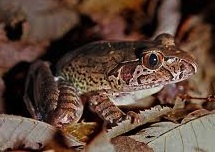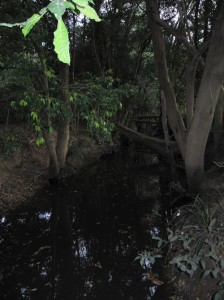Water Pollution
August 6, 2013 by admin
Filed under WATER POLLUTION
Contaminated waterways
Local and downstream effects of intense toxic chicken broiler production on biodiversity can lead to the formation of toxic algae. The algae is formed when excess agricultural nutrients from chicken manure, especially nitrogen and phosphorus, are washed downstream, accumulating in pockets of calm water.
Algae capitalize on the abundance of nutrients and reproduce in large blooms that deplete dissolved oxygen from the surrounding waters as they die and decompose. Marine life flees or dies as dissolved oxygen drops below the levels they need to survive.
With the food chain broken, populations of species that feed on aquatic life also shrink away as biodiversity is extinguished and a once stable and productive ecosystem stagnates. Scientists say that the water chemistry of these dead zones may also cause the release of additional sediments that could lead to the release of a cocktail of more toxins, such as mercury, in freshwater marine environments.
 Impacts on the endangered Giant Barred Frog Mixophyes iterates
Impacts on the endangered Giant Barred Frog Mixophyes iterates
The majority of known populations of Mixophyes iteratus in the Mary River catchment are known from lowland tributaries of the Mary River comprising the lower altitudinal limit of their range. This strong-hold is also the northern limit of the core Giant-barred Frog population in Australia. Here they inhabit stretches of creek that are characterised by slow pools and stable creek banks with under-cuts for egg laying. Healthy riparian vegetation is essential for providing leaf litter, bank stability and detritus for tadpoles. Canopy closure is normally a feature of this frog’s habitat as it provides cool temperatures, cover and abundant leaf-litter.
Significant populations have been recorded in recent years at Belli, Blackfellow, Happy Jack and Coonoongibber Creeks. These records contribute significantly to the core lowland populations of Mixophyes iteratus and constitute the lower limit of the frog’s altitudinal range and also the North-easterly limit of its range (one record is known from the Burrum River catchment above Lenthalls Dam about 150 km to the north; its connectivity with southern populations is unknown but unlikely).
Construction of the broiler farm will likely have significant impacts on the habitat and populations of Mixophyes iteratus by:
• Polluting breeding areas.
• Decreasing habitat areas for occupancy.
• Decreasing population levels and
• Isolating the population leading to reduced genetic integrity and possible genetic depression.
• Disrupting the breeding cycle of the population.
• Introducing diseases that may cause the species to decline.
• Interfering with the recovery of the species.
A Recovery Plan has been developed for the Stream frogs of SE Queensland (Hines et al, 2002).
Recovery of Mixophyes iteratus is addressed in section 4.4 of the plan and reads as follows:
Manage populations of the Giant Barred-Frog on private land.
The vast majority of known populations of the Giant barred-frog in South-east Queensland occur along narrow remnant riparian vegetation on private lands. Long-term conservation of the Giant barred-frog in Queensland is dependant upon the maintenance of water quality and flow regimes, and on the protection and enhancement of riparian vegetation on these lands.
Pollution of riparian waterways is contrary to the recovery actions in the Recovery Plan (Hinds et al 2002).
Adapted from PAGE submission 24 April 2008




It’s obvious that the avocado farm is already causing sediment buildup in North Blacklfellow Creek, so obviously shed waste will also end up in the creek.
I’m assuming SCRC is looking closely at this and will not allow the broiler farm to go ahead for this reason alone.